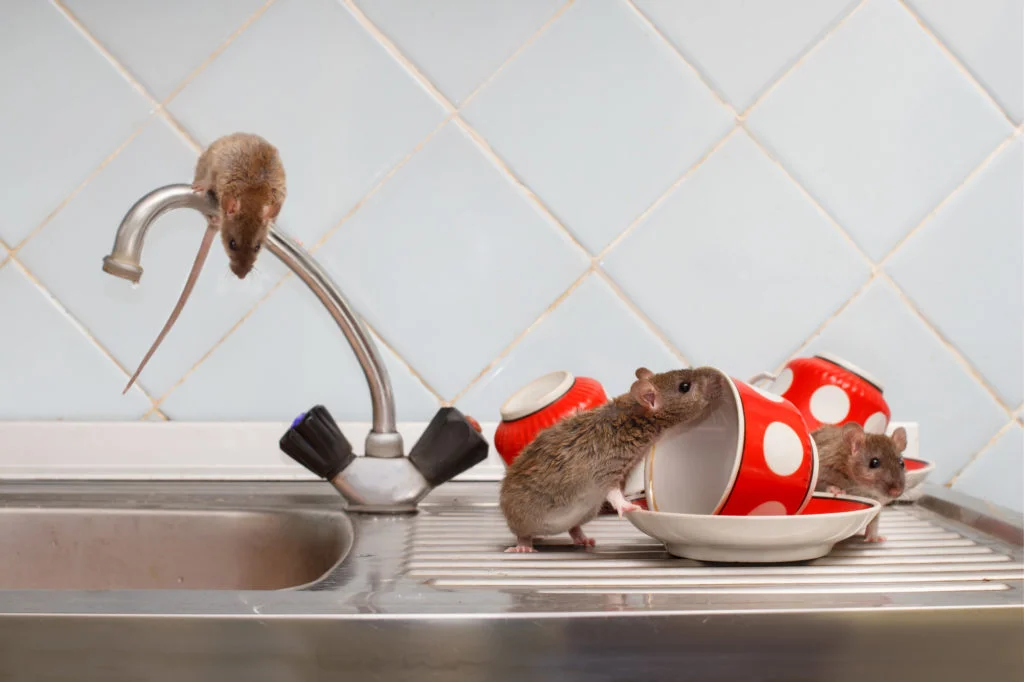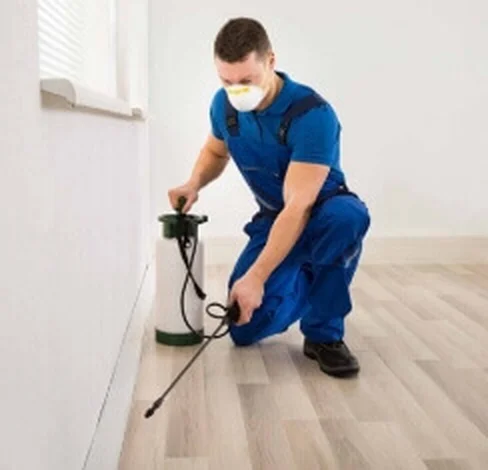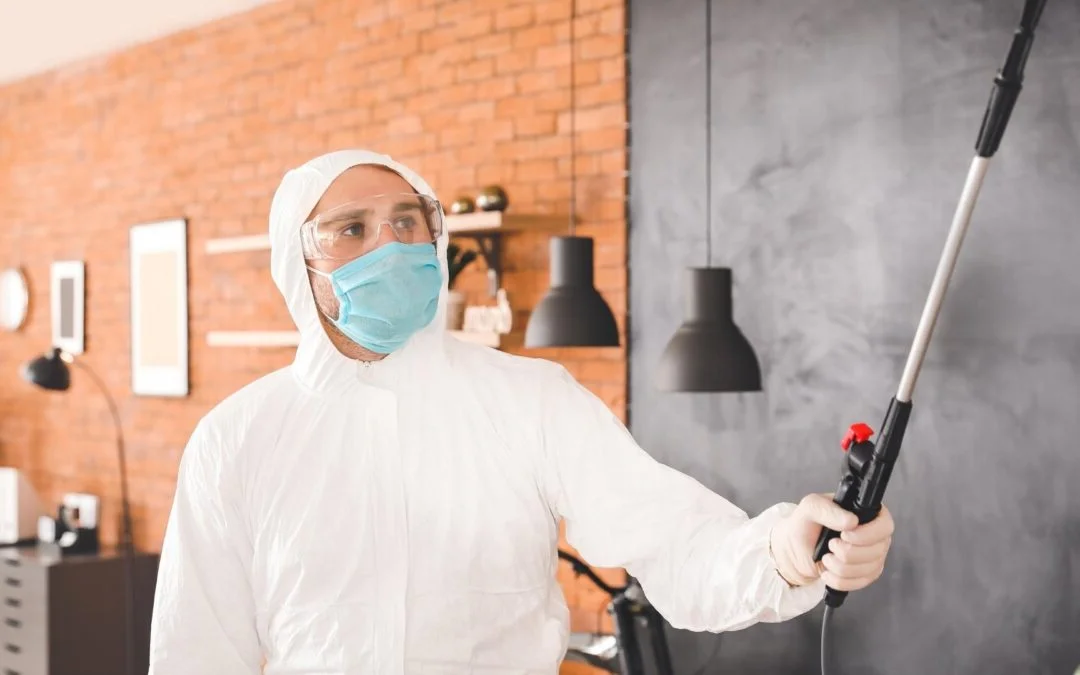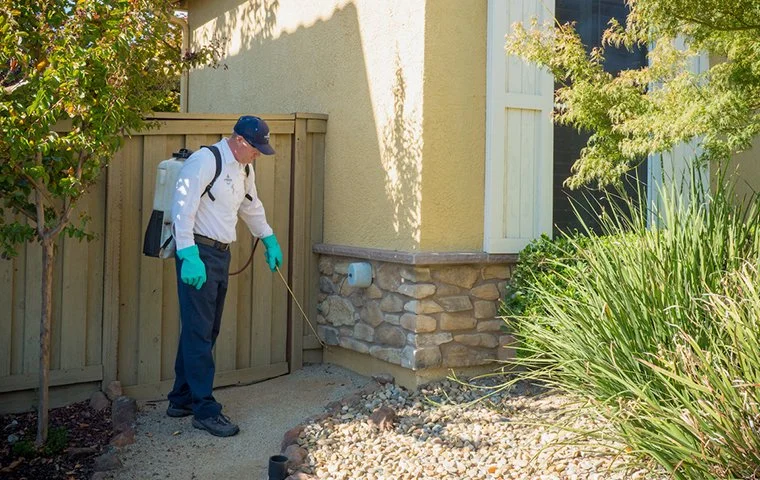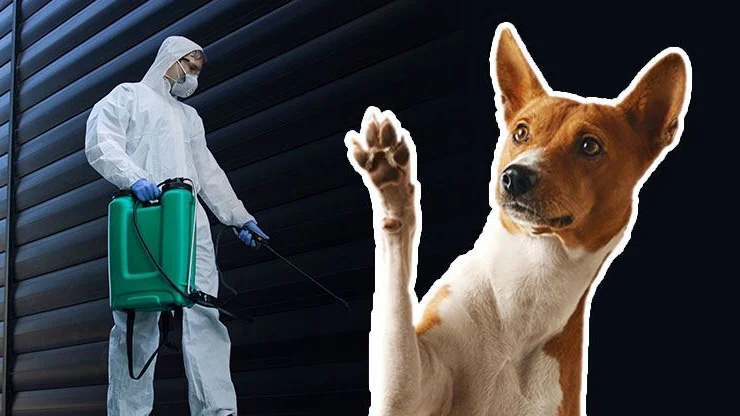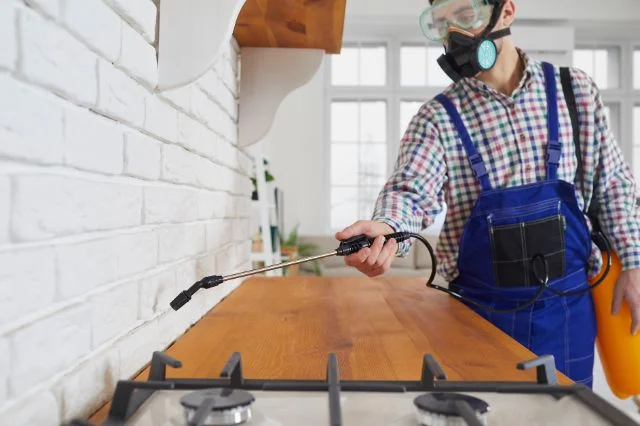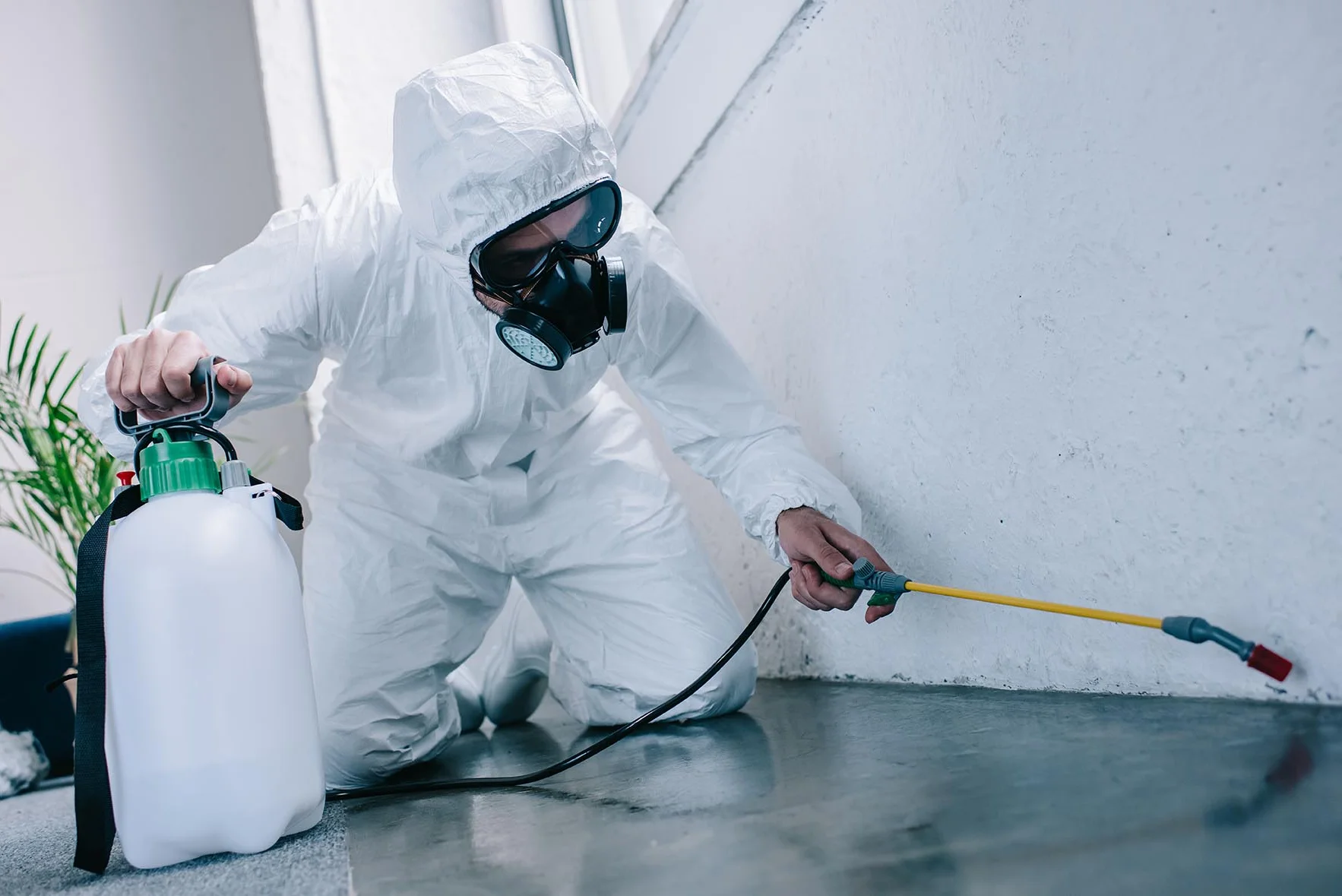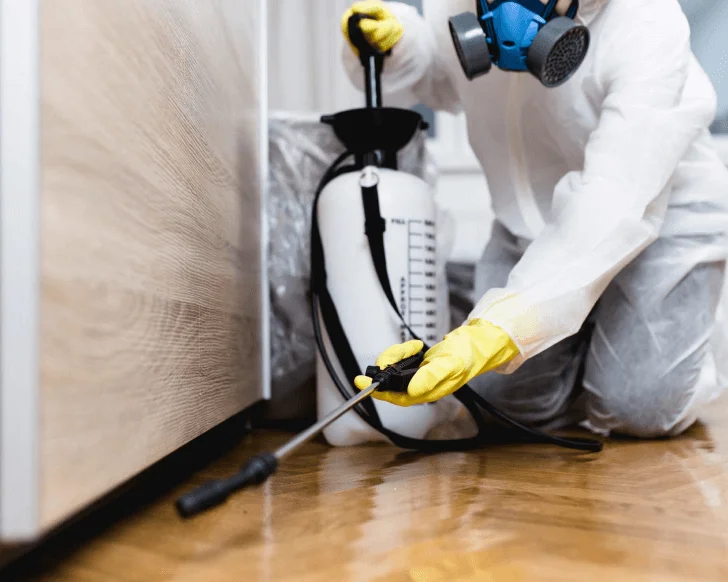Apartment complexes face unique pest control challenges that require
specialized management approaches combining individual unit protection with
community-wide prevention strategies. With multiple families sharing walls,
common areas, and building infrastructure, pests can quickly spread between
units if not properly managed. From cockroaches migrating through wall voids
to rodents using shared utility spaces as highways, apartment pest control
demands comprehensive programs that protect entire communities rather than
isolated units.
Successful multi-family residential pest management requires coordination
between property management, individual tenants, and professional exterminators
who understand the interconnected nature of apartment living. Effective programs
combine proactive prevention, rapid response to emerging issues, and tenant
education to create pest-free environments that enhance resident satisfaction
and property values. In this comprehensive guide, we'll explore proven strategies
for maintaining pest-free apartment communities using eco-friendly pest solutions
that protect families while preserving the environment.
Dealing with pest issues affecting multiple units in your apartment complex?
Our multi-family specialists provide emergency pest control
24/7 and comprehensive
residential pest protection programs that keep entire communities pest-free.
Get community-wide solutions now!
Unique Pest Control Challenges in Apartment Complexes
Multi-family residential properties present distinct pest management challenges
that differ significantly from single-family homes. Understanding these
complexities is essential for effective apartment pest control:
-
Interconnected living spaces Shared walls, ceiling spaces, and
utility connections allow pests to move freely between units. A cockroach
problem in one apartment can quickly spread to neighboring units through
wall voids, plumbing chases, and electrical conduits.
-
Varied tenant habits Different families have different cleanliness
standards, food storage practices, and pest awareness levels. One unit
with poor sanitation can become a breeding ground that affects the
entire building through connected infrastructure.
-
High population density Multiple families in close proximity
create concentrated food sources, waste generation, and human activity
that can attract and sustain large pest populations if not properly managed.
-
Common area pest pressure Laundry rooms, mailbox areas, lobbies,
and dumpster locations provide ideal pest harborage and breeding sites
that can serve as sources for unit infestations throughout the complex.
-
Treatment coordination challenges Effective pest control often
requires access to multiple units simultaneously, making scheduling
and tenant cooperation critical for successful outcomes.
-
Frequent tenant turnover New residents may unknowingly introduce
pests through furniture and belongings, while vacant units can become
pest harborage areas if not properly maintained during transitions.
These factors make community-wide pest prevention strategies essential
for apartment complexes. Successful programs address both individual unit
protection and the broader community ecosystem to prevent pest establishment
and eliminate existing populations effectively.
Common Pests in Apartment Complexes
Multi-family residential environments support specific pest populations
that thrive in the high-density, interconnected conditions found in
apartment communities. Understanding these common apartment pests is
crucial for developing effective control strategies:
Cockroaches
Professional cockroach treatment in apartment complex unit
German cockroaches are the most persistent pest in apartment complexes,
thriving in the warm, humid conditions found in kitchens and bathrooms.
These prolific breeders can establish large populations within wall
spaces and rapidly spread through utility connections between adjacent
units. American cockroaches often inhabit common areas, basements,
and utility rooms where moisture and organic matter provide ideal
breeding conditions.
Professional cockroach removal in apartment settings requires
building-wide approaches because cockroaches easily relocate between
units through shared infrastructure. Successful control combines
targeted baiting, crack-and-crevice treatments, and ongoing monitoring
throughout the entire complex.
Rodents
Rodent control measures being implemented in apartment building
House mice and Norway rats are common problems in apartment complexes,
using wall voids, utility chases, and ceiling spaces as highways
between units. These intelligent pests are attracted to food storage
areas, garbage collection points, and any location providing consistent
food and water sources. Mice can squeeze through gaps as small as
a dime, making exclusion challenging in older buildings.
Effective pest control for rats and mice in apartments requires
comprehensive building assessment, systematic exclusion of entry
points, and coordinated baiting programs that address the entire
population rather than individual units.
Bed Bugs
Emergency bed bug response in apartment complex
Bed bugs spread rapidly through apartment complexes via shared walls,
electrical outlets, and hallway carpeting. The high population density
and frequent movement of residents, guests, and service workers create
ideal conditions for bed bug dispersal throughout multi-family properties.
These persistent pests can establish satellite populations in adjacent
units even when the original source is treated.
24-hour pest control response is often necessary for bed bug
emergencies in apartments to prevent spread and minimize tenant
disruption. Treatment typically requires coordinated efforts across
multiple units using heat treatments, chemical applications, and
comprehensive monitoring programs.
Ants
Various ant species commonly invade apartment complexes, attracted by
food sources in kitchens and common areas. Carpenter ants can damage
wooden structures, while sugar ants create trails that lead entire
colonies to food sources. Fire ants may establish outdoor colonies
that pose stinging risks to residents, especially children playing
in common areas.
Flying Insects
Fruit flies, drain flies, and gnats can quickly spread throughout
apartment buildings via HVAC systems and plumbing connections. These
small insects breed in organic matter found in garbage disposals,
floor drains, and plumbing traps, then disperse to establish secondary
populations in multiple units.
Stored Product Pests
Pantry pests like Indian meal moths, flour beetles, and grain weevils
can spread between units through wall voids and utility spaces. Once
established in one unit's kitchen, these pests can migrate to adjacent
units and establish satellite infestations in other food storage areas.
Occasional Invaders
Spiders, silverfish, centipedes, and other occasional invaders often
enter apartments seeking shelter or following prey. While generally
not major pest problems, these insects can cause resident discomfort
and complaints, especially when found in bathrooms or bedrooms.
Property Management Coordination and Communication
Professional coordination between pest control and property management
Successful apartment complex pest management requires close collaboration
between professional exterminators and property management teams.
This partnership ensures that pest control efforts align with property
operations, tenant relations, and maintenance schedules to create
sustainable, pest-free communities that enhance resident satisfaction
and property values.
Exterminator in action programs work as extensions of the
property management team, providing expertise, documentation, and
rapid response capabilities that support overall property management
goals while maintaining high standards of resident care and communication.
Integrated Management Approach
-
Regular communication protocols Weekly or monthly meetings
between pest control professionals and property managers ensure
timely information sharing about pest activity, treatment schedules,
and resident concerns.
-
Tenant notification systems Coordinated communication helps
residents understand treatment schedules, preparation requirements,
and their role in community-wide pest prevention efforts.
-
Maintenance integration Pest control recommendations are
integrated with regular property maintenance to address structural
issues that contribute to pest problems, such as moisture control
and exclusion work.
-
Emergency response coordination Clear protocols for reporting
and responding to pest emergencies ensure rapid resolution without
confusion or resident dissatisfaction.
Documentation and Reporting
Professional pest control services provide detailed documentation
of all treatments, inspections, and recommendations. This documentation
supports property management in addressing tenant concerns, planning
maintenance activities, and demonstrating proactive pest management
for insurance and regulatory purposes.
Tenant Relations Support
Pest control professionals help property managers maintain positive
tenant relations by providing educational materials, responding to
resident questions, and ensuring treatments are conducted with minimal
disruption to daily life. This support helps reduce tenant complaints
and turnover related to pest issues.
Comprehensive Residential Pest Protection Programs
Residential pest protection in apartment complexes requires
comprehensive programs that address both individual unit needs
and community-wide pest pressure. Home exterior pest treatment
adapted for multi-family properties includes perimeter protection,
common area management, and coordinated interior treatments that
create pest-free environments throughout the entire community.
Professional protection programs emphasize prevention over reaction,
using integrated pest management principles to maintain pest-free
conditions with minimal disruption to residents and cost-effective
approaches that provide maximum value for property management budgets.
Multi-Level Protection Strategy
-
Exterior perimeter defense Comprehensive treatment of building
exteriors, landscaped areas, and entry points creates a protective
barrier that reduces pest pressure from outside sources.
-
Common area management Regular treatment and monitoring of
lobbies, laundry rooms, mailbox areas, and storage spaces prevents
these high-traffic areas from becoming pest sources.
-
Individual unit protection Targeted treatments in kitchens,
bathrooms, and utility areas address pest-prone areas while
maintaining safe, comfortable living environments.
-
Structural exclusion work Sealing entry points, installing
door sweeps, and addressing moisture issues creates long-term
pest prevention that reduces ongoing treatment needs.
Preventive Treatment Schedules
| Treatment Area |
Frequency |
Focus |
| Exterior Perimeter |
Quarterly |
Foundation treatment, entry point protection, and landscaped
area management to prevent outdoor pest migration.
|
| Common Areas |
Monthly |
Lobbies, laundry rooms, hallways, and shared spaces receive
regular treatment and monitoring to prevent pest establishment.
|
| Individual Units |
Quarterly |
Kitchen and bathroom crack-and-crevice treatments, utility
area inspection, and exclusion work as needed.
|
| Utility Areas |
Bi-monthly |
Mechanical rooms, electrical closets, and maintenance areas
receive targeted treatments to eliminate pest highways.
|
| Emergency Response |
As needed |
Rapid response to pest emergencies with immediate treatment
and follow-up to prevent spread throughout the complex.
|
Protect your entire apartment community with professional pest management.
From building-wide residential pest protection to emergency response,
we keep your property pest-free and tenants satisfied –
schedule your community assessment today!
Eco-Friendly Pest Control for Apartment Communities
Apartment complexes with multiple families and pets require especially
careful consideration of pest control methods and chemical exposure.
Pet safe pest treatment approaches ensure effective pest
management while protecting the health and safety of residents,
children, and beloved pets living in close proximity throughout
the community.
Modern eco-friendly pest management emphasizes prevention, targeted
applications, and low-impact treatments that maintain pest-free
environments without compromising resident health or environmental
quality in densely populated residential settings.
Family and Pet Safety Priority
Our apartment complex pest control specialists prioritize resident
and pet safety through eco-friendly treatment methods, comprehensive
communication about all service activities, and careful selection
of treatment materials appropriate for multi-family environments.
Green Treatment Methods
-
Integrated Pest Management (IPM) Comprehensive programs
emphasizing prevention, monitoring, and minimal chemical use provide
effective long-term pest control with reduced environmental impact.
-
Targeted baiting systems Tamper-resistant bait stations provide
effective pest control while minimizing exposure risks to residents
and pets in high-traffic areas.
-
Physical exclusion methods Sealing entry points and modifying
building features prevents pest access without any chemical applications,
providing permanent protection.
-
Biological controls Natural predators and microbial agents
provide eco-friendly pest management for outdoor areas and specific
pest problems without affecting resident health.
-
Heat treatments Non-chemical pest elimination methods like
heat treatments for bed bugs provide effective control without
chemical residues or odors that could affect residents.
Safe Application Practices
Professional treatments in apartment complexes follow strict safety
protocols including proper ventilation during applications, clear
resident communication about treatment schedules, and use of products
specifically approved for residential environments with children and pets.
Tenant Education and Community Involvement
Professional pest control education session for apartment residents
Successful apartment complex pest management depends heavily on
tenant cooperation and understanding of their role in community-wide
prevention efforts. Family-owned exterminator services often
excel at building personal relationships with residents and providing
education that creates a collaborative approach to maintaining
pest-free communities.
Comprehensive education programs help residents understand how
their individual actions affect the entire community's pest situation
and provide practical guidance for preventing pest problems in
their personal living spaces and shared areas.
Educational Program Components
-
New tenant orientations All new residents receive pest prevention
information as part of their move-in process, including guidelines
for inspecting belongings and understanding community pest management policies.
-
Seasonal prevention workshops Regular community meetings provide
timely advice about seasonal pest prevention measures and allow
residents to ask questions about pest issues.
-
Early detection training Residents learn to identify early
signs of pest activity and understand proper reporting procedures
that enable rapid professional response.
-
Preparation instructions Clear guidelines help residents
understand how to prepare for treatments, what to expect during
service visits, and how to support community-wide pest management efforts.
Community Prevention Best Practices
Resident education covers proper food storage, waste management,
moisture control, and cleanliness standards that reduce pest attraction.
Special emphasis is placed on practices that prevent pest movement
between units through shared walls, utility connections, and common areas.
Communication Tools
Professional services provide property managers with educational
materials, newsletters, and communication templates that help maintain
ongoing resident awareness about pest prevention and treatment activities
throughout the community.
Emergency Pest Response for Apartment Communities
Apartment complexes require rapid response capabilities for pest
emergencies that could quickly spread throughout the community
and affect multiple families. Fast pest control response
services are essential for containing pest problems before they
create widespread resident dissatisfaction and potential health risks.
Emergency response protocols for apartment communities include
immediate assessment of affected areas, containment treatments to
prevent spread, and coordination with property management to minimize
resident impact while addressing pest problems effectively and
professionally.
Rapid Response Capabilities
-
24/7 emergency availability Emergency technicians respond
to apartment pest emergencies any time, preventing problems from
escalating when property management staff may not be available.
-
Multi-unit coordination Emergency response includes assessment
and treatment of adjacent units to prevent pest migration and ensure
complete containment of the problem.
-
Immediate containment protocols Emergency treatments focus
on rapid containment to prevent pest spread while comprehensive
follow-up treatments eliminate the source population.
-
Resident communication support Emergency services include
helping property management communicate with affected residents
about treatment procedures and timelines.
Common Apartment Emergencies
Typical emergency situations in apartment complexes include bed bug
discoveries requiring immediate containment, cockroach swarms that
could spread to multiple units, rodent activity affecting resident
comfort, wasp nests posing stinging risks, and any pest situation
that creates immediate health or safety concerns for residents.
Emergency Prevention
Proactive pest management programs help prevent emergencies through
regular monitoring, early detection systems, and preventive treatments
that address pest problems before they become visible to residents
or require emergency intervention.
Advanced Monitoring Technology for Apartment Complexes
Modern apartment complex pest management utilizes sophisticated
monitoring technology to track pest activity across multiple units
and provide early warning of emerging problems. Home pest inspection
techniques adapted for multi-family properties use digital monitoring
networks, remote sensors, and data analytics to optimize treatment
strategies and prevent pest problems before they become visible to residents.
These technological advances enable proactive management that
maintains pest-free conditions with minimal disruption to residents
while providing property managers with detailed data about pest
pressure and treatment effectiveness throughout their communities.
Smart Monitoring Systems
-
Digital trap networks Smart monitoring devices throughout
common areas and selected units provide real-time data on pest
activity, enabling immediate response and trend analysis.
-
Environmental sensors Monitoring temperature, humidity, and
air quality helps predict pest pressure and optimize treatment
timing based on conditions that influence pest activity.
-
Mobile reporting systems Technicians use tablets and smartphones
to document treatments, capture pest evidence, and provide immediate
reports to property management.
-
Predictive analytics Data analysis helps predict pest activity
based on seasonal patterns, building operations, and environmental
factors specific to each apartment community.
Resident Reporting Integration
Modern monitoring systems include resident reporting capabilities
through property management apps or online portals that allow tenants
to report pest sightings immediately, enabling rapid professional
response and data collection for trend analysis.
Cost-Effective Pest Management for Property Owners
Property owners and managers need pest control solutions that
deliver effective results while managing costs responsibly.
Commercial pest control service approaches for apartment
complexes emphasize prevention-based strategies that reduce long-term
costs while maintaining tenant satisfaction and property values.
Comprehensive pest management programs often cost less than reactive
emergency treatments, tenant turnover, and reputation damage caused
by pest problems. Investment in professional services pays dividends
through improved tenant retention, reduced maintenance costs, and
enhanced property marketability.
Budget-Friendly Program Benefits
-
Preventive cost savings Regular monitoring and maintenance
prevent expensive emergency treatments and tenant complaints that
cost far more than ongoing professional service.
-
Tenant retention improvement Pest-free environments reduce
tenant complaints and turnover, saving significant costs in unit
preparation, marketing, and vacancy periods.
-
Property value preservation Well-maintained, pest-free properties
command higher rents and maintain better investment returns compared
to properties with ongoing pest issues.
-
Insurance and liability protection Professional pest management
documentation protects against liability claims and may reduce
insurance costs related to pest-related property damage.
Flexible Service Options
Professional services offer flexible program options that can be
customized to fit different property budgets and needs, from basic
perimeter protection to comprehensive building-wide programs that
include individual unit treatments and emergency response capabilities.
Return on Investment Analysis
Professional pest control services provide detailed cost analysis
showing how preventive pest management reduces overall property
operating costs through reduced emergency calls, lower maintenance
expenses, and improved tenant satisfaction metrics.
Seasonal Pest Management for Apartment Communities
Spring (March-May)
- Increased ant activity around buildings
- Flying insect emergence from winter hiding
- Rodent breeding season intensifies
- Landscaping pest activity begins
Focus: Exterior perimeter treatments and preventive
measures as pest activity increases throughout the community.
Summer (June-August)
- Peak cockroach and ant activity
- Flying insect pressure on upper floors
- Increased outdoor pest migration indoors
- Common area pest activity intensifies
Focus: Intensive monitoring and treatment of
common areas and comprehensive community-wide pest management.
Fall (September-November)
- Pest migration indoors for winter shelter
- Increased rodent activity in units
- Overwintering pest establishment
- Preparation for heating season pest movement
Focus: Comprehensive exclusion work and elimination
of indoor harborage sites before winter months.
Winter (December-February)
- Concentrated indoor pest activity
- Heating system pest distribution
- Reduced outdoor pest pressure
- Focus on interior treatments
Focus: Interior treatments and monitoring with
preparation for spring pest emergence throughout the community.
Special Situations and Unique Challenges
Move-In/Move-Out Inspections
Unit turnover presents both opportunities and risks for apartment
complex pest management. Residential pest treatment during
move-out periods allows for comprehensive unit treatment without
tenant disruption, while move-in inspections help prevent new
residents from unknowingly introducing pests through furniture
and belongings.
Professional services include vacancy treatments, move-in inspections,
and tenant education about preventing pest introduction during
the moving process. These services help maintain community-wide
pest prevention while ensuring new residents start with pest-free
living spaces.
Student Housing Complexes
Student apartment communities face unique challenges due to high
population turnover, varied cleanliness standards, and frequent
gatherings that can create pest attraction. Specialized programs
address these challenges through intensive education, flexible
treatment schedules, and rapid response capabilities during peak
move-in periods.
Senior Living Communities
Senior apartment complexes require especially careful pest management
approaches that consider health sensitivities and medication concerns.
Treatment methods emphasize safety, minimal chemical exposure, and
coordination with healthcare providers to ensure pest control activities
don't interfere with medical needs.
Affordable Housing Properties
Affordable housing communities often face budget constraints that
require cost-effective pest management approaches without compromising
effectiveness. Programs emphasize prevention, resident education,
and efficient treatment methods that provide maximum pest control
value within limited budgets.
Luxury Apartment Communities
Upscale apartment complexes require discreet, high-end pest management
services that maintain the premium living experience residents expect.
Services emphasize prevention, minimal resident disruption, and
coordination with concierge and maintenance staff to ensure pest
control activities align with luxury service standards.
Regulatory Compliance and Quality Assurance
Apartment complexes must comply with numerous regulatory requirements
related to pest control, tenant safety, and environmental protection.
Professional pest management services ensure all treatments and procedures
meet or exceed applicable regulations while maintaining detailed
documentation for compliance verification and property management support.
Health and Safety Compliance
-
Housing code requirements Professional services ensure all
pest control activities comply with local housing codes and health
department regulations governing multi-family residential properties.
-
Tenant notification protocols Proper notice and communication
about pest control treatments comply with tenant rights regulations
and lease agreement requirements.
-
Chemical application standards All treatments follow EPA
guidelines and state regulations for pesticide use in residential
environments with multiple families and children.
-
Documentation requirements Comprehensive record-keeping supports
regulatory compliance and provides protection against liability
claims related to pest control activities.
Quality Assurance Programs
Professional services implement rigorous quality assurance programs
that include regular performance monitoring, tenant satisfaction
surveys, treatment effectiveness analysis, and continuous improvement
based on actual results and resident feedback.
Apartment Complex Success Stories
"PestControl100 transformed our 200-unit complex from having constant
pest complaints to maintaining a pest-free environment for over
three years. Tenant satisfaction improved dramatically and our
maintenance costs decreased significantly."
- Maria G., Property Manager
★★★★★
"The bed bug emergency response saved our reputation when we discovered
an infestation spreading between units. Their containment and treatment
eliminated the problem without affecting other residents or requiring
any unit evacuations."
- James L., Property Owner
★★★★★
"As working parents, we appreciate the eco-friendly treatments
that keep our apartment pest-free without worrying about our
children's safety. The education program helped us understand
our role in community pest prevention."
- Sarah and Tom K., Residents
★★★★★
Best Practices for Apartment Complex Pest Management
Successful apartment complex pest management follows proven best
practices that address the unique challenges of multi-family
residential properties. Outside pest barrier treatments
combined with interior management create comprehensive protection
that maintains pest-free communities while supporting tenant
satisfaction and property values.
These best practices emphasize prevention, early detection, rapid
response, and community-wide coordination to create sustainable
pest management programs that work effectively in complex multi-family
environments.
Prevention-First Approach
-
Comprehensive building assessment Regular evaluation of
structural conditions, moisture issues, and pest entry points
enables proactive prevention rather than reactive treatment.
-
Integrated pest management (IPM) Holistic approaches combining
prevention, monitoring, and targeted treatments provide sustainable
pest control with minimal environmental impact.
-
Tenant education programs Ongoing resident education about
pest prevention creates community-wide cooperation that supports
professional pest management efforts.
-
Regular monitoring and documentation Systematic monitoring
programs detect pest activity early and provide data for continuous
program improvement and regulatory compliance.
Communication Excellence
Effective communication between pest control professionals, property
management, and residents creates transparency and cooperation that
enhances treatment effectiveness while maintaining positive community
relations and tenant satisfaction.
Continuous Improvement
Professional pest management programs use performance data, resident
feedback, and industry best practices to continuously refine and
improve their approaches, ensuring optimal results and cost-effectiveness
for apartment complex pest management.
Frequently Asked Questions
How does pest control work differently in apartment complexes compared to single-family homes?
Apartment complex pest control requires community-wide approaches
because pests can easily move between connected units through
shared walls, utility lines, and common areas. Individual unit
treatments often fail because pests simply relocate to adjacent
untreated areas. Successful programs address the entire community
ecosystem through coordinated treatments, common area management,
and tenant education that creates building-wide prevention efforts.
What should tenants do if they discover pests in their apartment?
Tenants should immediately report pest sightings to property
management and avoid attempting DIY treatments that could scatter
pests to neighboring units. Professional assessment is essential
to determine if the problem is isolated or part of a building-wide
issue. Tenants should document pest activity with photos if
possible, avoid moving items between rooms, and follow preparation
instructions provided by pest control professionals.
Are eco-friendly pest control methods effective in apartment complexes?
Yes, eco-friendly methods are highly effective in apartment
complexes when properly implemented as part of comprehensive
IPM programs. Methods like targeted baiting, heat treatments,
physical exclusion, and biological controls work well in multi-family
settings. These approaches are often preferred due to safety
concerns with multiple families, children, and pets sharing
common areas and ventilation systems.
How quickly can pest problems spread in apartment buildings?
Pest problems can spread very quickly in apartment complexes
due to interconnected infrastructure. Cockroaches can move between
adjacent units within hours through wall voids and utility
connections. Flying insects can disperse throughout multiple
units within days. Bed bugs may take weeks to spread but can
eventually affect entire buildings if not contained. This rapid
spread potential makes early detection and immediate professional
response critical.
How much does professional pest control cost for apartment complexes?
Pest control costs for apartment complexes vary based on building
size, pest pressure, and service level selected. However, comprehensive
preventive programs typically cost less than reactive emergency
treatments and tenant turnover expenses. Most properties find
that professional pest management pays for itself through reduced
maintenance costs, improved tenant retention, and enhanced property
values. Professional services provide detailed cost analysis
and ROI projections for different program options.


